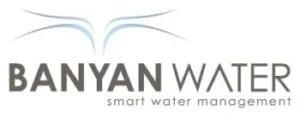
Out of the Deep End: What is water neutrality?
By Ian Coughlan
Conservation professionals, sustainability technologists and more have been discussing carbon neutrality—balancing your carbon footprint—for a while. To achieve carbon neutrality, enterprises calculate the amount of carbon emitted and actively offset that amount, by either sequestering an equivalent amount or purchasing carbon credits to make up the difference. Recently, a similar term has come to fruition: water neutrality. But unlike carbon neutrality, how might an enterprise achieve “water neutrality?” An enterprise can’t “produce” water… can they?
Not exactly, but there are tools and systems to help achieve the goal of water neutrality. According to a 2008 UNESCO report, “‘Water neutral’ means that one reduces the water footprint of an activity as much as reasonably possible and offsets the negative externalities of the remaining water footprint.” The report later mentions that water neutrality can be “can be an instrument to raise awareness, stimulate measures that reduce water footprints and generate funds for the sustainable and fair use of freshwater resources.”
Businesses like Coca Cola—which generally have large water footprints in their supply chain—can use water neutrality to help minimize and offset the impact their production has on their surrounding communities. By establishing long-term sustainable water resources—such as investing in local watershed and natural resource protection as well as enhancing equitable access to freshwater resources—these businesses and large water users can help to be a part of a solution rather than a detriment.
At recent sustainability conference hosted by Sustainable Silicon Valley, Microsoft’s Sustainability Program Manager, Katie Ross, announced that its Silicon Valley Campus redevelopment would make the Mountain View, California office the first net-zero water campus in Silicon Valley: 100 percent of the building’s non-potable water demand will be met with rainwater or recycled water.
“Beyond drinking fountains, sinks and showers, not a drop will come from municipal reservoirs,” Microsoft explains on their blog. Firstly, Microsoft will maximize water efficiency in indoor fixtures and irrigation systems while utilizing drought-tolerant plant materials.
Secondly, Microsoft will install a state-of-the-art, on-site water reuse system. The system will capture rainwater and wastewater (water that goes down the drain and toilet), filter and treat the water to acceptable levels, and then use the same water for non-potable applications like cooling towers, irrigation and toilet flushing. Curious how water recycling is safe for tenants? Read more on graywater in a previous Banyan blog.
Microsoft’s efforts address one of California’s paramount environmental issues: water scarcity and population growth. Most of the Bay Area’s water supply comes from the Sierra Nevada Mountains, and—more often than not—is only used once before flowing onward to the Pacific Ocean. As drought conditions intensify, the state’s largest water users must think innovatively and invest in water reuse systems like Microsoft’s to break the scarcity cycle and maximize the value of the water.
For smaller businesses and property owners without Microsoft-sized resources or scalability, tackling or achieving water neutrality might seem intimidating, if not impossible. One of the simplest places to start is by effectively tracking and understanding your building’s water demand.
Tools like Banyan Water’s Indoor Insight can help visualize and clarify water demand in real time, identifying the simplest steps to lowering water demand. Another simple solution for new developments include local utility offerings for recycled water for non-potable applications. These purple pipes can provide reused water from a central treatment center, usually at a discounted rate. Lastly, as water rates increase, proving the business case for on-site water recycling systems like Microsoft’s will be easier and easier. Could your business build the next net-zero water building?
Have more questions about how you can track and reduce your water demand? Contact us to let Banyan’s experts create a customized water management plan for your business!
